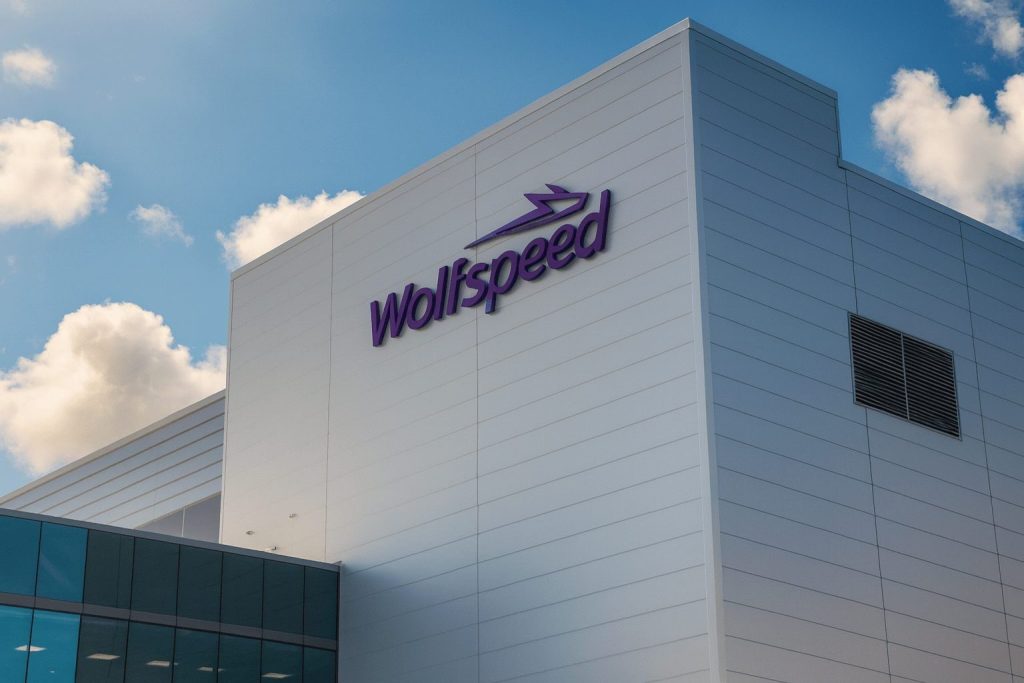Published: November 23, 2025 – markets closed (last trading session: Friday, Nov. 21, 2025)
Key takeaways for PepsiCo stock today
- Share price: PepsiCo (NASDAQ: PEP) last closed at about $146.33 on Friday, up roughly 0.2%, giving the company a market value near $200 billion. [1]
- Income story: The board has approved a new quarterly dividend of $1.4225 per share (annualized $5.69, yield around 3.8%–3.9% at current prices), marking more than five decades of consecutive dividend increases. [2]
- Today’s headlines (Nov. 23, 2025): A wave of institutional 13F filings shows major asset managers — including American Century, Prudential, Franklin Resources, MUFG, Neo Ivy, and multiple Evelyn Partners entities — adding to or initiating positions in PEP, even as some others trim stakes. [3]
- Street view: Most Wall Street analysts rate PepsiCo a “Hold” to soft “Buy”, with average 12‑month price targets around $156–$158 per share, implying high‑single‑digit upside from Friday’s close. [4]
- Strategic theme: The 2025 playbook combines aggressive cost cutting (SKU reductions, plant consolidation, workforce trims) with innovation in functional and “better-for-you” drinks (including prebiotic cola launches), as PepsiCo tries to rebuild margins while defending its defensive, dividend‑payer status. [5]
This article is for informational purposes only and does not constitute financial advice or a recommendation to buy or sell any security.
PepsiCo stock price snapshot as of this weekend
Because today is Sunday, U.S. equity markets are closed. The most recent trading data comes from Friday, November 21, 2025:
- Last close: ~$146.33 per share, up about 0.16% on the day. [6]
- Intraday range (Friday): roughly $146.05–$148.92.
- 52‑week range: approximately $127.60 (low) to $165.13 (high), placing today’s price in the lower-middle of its one‑year band. [7]
- Valuation: Recent filings and analyst work point to a trailing P/E near 27–28x and a forward P/E around 17.5x, slightly below the broader beverages industry average. [8]
- Risk profile: A beta around 0.45 underscores PepsiCo’s role as a low‑volatility, defensive staple rather than a high‑beta growth story. [9]
From a pure price‑action standpoint, PEP has lagged slightly in recent months: Zacks notes the shares are down about 2.5% over the past three months, underperforming a modest decline in the sector. [10]
Today’s PepsiCo headlines: big money moves in (and a few move out)
Most of today’s (Nov. 23, 2025) news flow around PepsiCo centers on institutional investors adjusting their stakes, as new 13F filings hit the tape. These filings generally reflect positions as of the second quarter, but the stories provide a real‑time view of how large investors are positioning around PEP.
Who’s buying more PepsiCo?
Several asset managers disclosed meaningful new or larger PEP positions:
- American Century Companies Inc.
- Increased its PepsiCo stake by about 1.6%, adding 39,787 shares to bring total holdings to roughly 2.53 million shares, worth around $334 million at the time of filing. [11]
- Prudential PLC
- Boosted its holdings by 762.3%, adding 25,118 shares for a new total of 28,413 shares valued at about $3.75 million. [12]
- Franklin Resources Inc.
- One of the largest moves: Franklin bought around 2.54 million shares, lifting its stake 19.5% to 15.58 million shares, or roughly 1.14% of PepsiCo’s outstanding stock, valued at just over $2.0 billion. [13]
- MUFG Securities Americas Inc.
- Increased its position by 25.2%, purchasing 6,110 shares to own 30,387 shares worth about $4.0 million. [14]
- Neo Ivy Capital Management
- Opened a new position of 7,153 shares (about $944,000 in value), signalling fresh hedge-fund interest. [15]
- Evelyn Partners (multiple entities)
MarketBeat’s institutional‑ownership roundup also points to other firms, such as Cowa LLC, increasing their positions, contributing to institutional ownership of roughly 73% of PepsiCo’s shares outstanding. [18]
Who’s trimming exposure?
Not every headline is about buying:
- Rhumbline Advisers cut its PepsiCo stake by 6.6% in Q2, selling 186,480 shares and ending the quarter with about 2.63 million shares worth nearly $347 million. [19]
- Earlier this week, Bank Julius Baer & Co. Ltd Zurich disclosed an 83% reduction in its PEP position, selling 536,131 shares and leaving just over 107,000 shares on the books. [20]
The combined picture: net interest in PepsiCo from large, long‑term investors remains strong, with some rotation among individual institutions but broadly stable high institutional ownership.
Dividends and cash flow: still a core part of the PEP story
For many investors, PepsiCo is first and foremost a dividend stock — and recent news reinforces that identity.
New quarterly dividend and yield
On November 19, PepsiCo’s board declared a quarterly dividend of $1.4225 per share, payable on January 6 to shareholders of record as of December 5 (ex‑dividend date also December 5). [21]
- Annualized dividend: $5.69 per share. [22]
- Implied yield: Around 3.8%–3.9% at Friday’s closing price near $146–147. [23]
- Track record: PepsiCo has raised its dividend for more than 50 consecutive years (over 50 years of increases; MarketBeat counts 54), firmly placing it in the “dividend aristocrat” camp. [24]
Several research pieces this week have dug into whether this dividend hike is sustainable. One analysis notes PepsiCo’s outlook for about $101.5 billion in revenue and $11.8 billion in earnings by 2028, implying low‑single‑digit annual revenue growth (~3.4%) and mid‑single‑digit earnings growth (~6–7%) — slow but steady enough to support payouts, assuming execution stays on track. [25]
Payout ratios: a balancing act
There is a nuanced debate around PepsiCo’s payout levels:
- Some data providers calculate the dividend payout ratio at roughly 108% of recent earnings or free cash flow, suggesting the dividend is currently running ahead of near‑term cash generation. [26]
- MarketBeat’s dividend analysis, however, points to a payout around two‑thirds of next year’s projected EPS (about 68% now, ~64% on forward estimates), indicating the dividend should be covered if earnings grow as expected. [27]
Put simply: income investors are being well‑paid today, but the bar for execution is higher than it was when payout ratios were lower. That’s one reason why some analysts emphasize monitoring free cash flow as closely as EPS.
Earnings and PepsiCo’s 2025 “reset” strategy
Recent results: small beat, modest growth
In its most recent reported quarter (fiscal 2025 Q3), PepsiCo:
- Delivered EPS of $2.29, slightly ahead of the $2.26 consensus.
- Generated about $23.94 billion in revenue, just above Wall Street’s estimate of $23.91 billion.
- Posted revenue growth of roughly 2.7% year over year.
- Reported a net margin near 7.8% and a return on equity around 58%. [28]
Analysts expect full‑year 2025 EPS to dip slightly to around $8.0–$8.1 before resuming mid‑single‑digit growth in 2026. [29]
2025 playbook: cost cuts funding innovation
A detailed strategy piece from Zacks (via Nasdaq) frames 2025 as a “reset year” for PepsiCo, with two main levers: [30]
- Aggressive cost reduction
- SKU rationalization: more than 35% of SKUs already cut, with another ~15% reduction planned in Q4.
- Operational streamlining: workforce reductions (including about 7% of Frito-Lay’s staff), plant closures, distribution consolidation and expanded use of automation and AI to simplify operations.
- Goal: rebuild margins that were pressured by inflation, higher input costs and logistics challenges.
- Innovation in beverages and snacks
- Emphasis on functional and “better‑for‑you” products, such as prebiotic beverages and lower‑sugar offerings.
- Growth in products like Pepsi Zero Sugar, emerging brands like poppi, and launches like Pepsi Prebiotic and Gatorade Lower Sugar are highlighted as examples of this pivot. [31]
Other headlines from the last few days fit into this theme:
- A press release about PEPSI® Prebiotic Cola going on sale nationwide for Black Friday as a limited‑time offering underscores the company’s push into functional sodas. [32]
- Yahoo and MSN coverage point to two all‑new Pepsi sodas plus a prebiotic drink launch, positioning PepsiCo to capture holiday and wellness‑oriented spending. [33]
Taken together, PepsiCo is trying to offset higher costs and slower volume growth by cutting complexity and leaning harder into premium, health‑leaning innovations.
How Wall Street rates PepsiCo stock right now
Consensus: mild upside, cautious tone
Different research platforms paint a broadly similar picture:
- MarketBeat reports a consensus “Hold” rating, with an average price target around $156.9 per share across more than 20 analysts. [34]
- StockAnalysis.com shows a “Buy” consensus from 14 analysts, with an average price target of about $157.79, roughly 8% above Friday’s close. [35]
- Public.com lists a Hold rating and an average 2025 price prediction near $157.71. [36]
- Zacks assigns PepsiCo a Rank #2 (Buy), noting the shares trade at a slight valuation discount to the industry on forward earnings. [37]
In other words, most analysts don’t see PEP as deeply undervalued, but they do see modest upside from today’s price if management hits its targets.
Recent target changes and debates
Recent weeks have brought a mix of upgrades and cautious tweaks:
- Piper Sandler recently trimmed its price target on PEP to about $161 while maintaining an “Overweight” view, partly reflecting concerns that GLP‑1 weight‑loss drugs could pressure demand for sugary snacks and beverages over time. [38]
- Several other firms — including Jefferies, HSBC, Barclays, Bank of America and DZ Bank — have nudged targets higher or reiterated neutral‑to‑positive ratings, with DZ Bank notably upgrading PepsiCo to “Buy” and setting a $167 target. [39]
Outside of formal ratings, editorial coverage is split:
- Bullish or constructive pieces describe PepsiCo as a “fairly valued dividend powerhouse” that offers diversification and defensive ballast in volatile markets. [40]
- More skeptical commentary — including a widely shared article, “Read This Before Buying PepsiCo Stock”, and another titled “3 Reasons to Sell PEP and 1 Stock to Buy Instead” — highlight sluggish volumes, slim forecast revenue growth (~3–4%) and compressing operating margins, arguing that the fundamental risk may not be fully captured in today’s price. [41]
Bull vs. bear: what today’s information implies
The bullish case for PepsiCo after this week’s news
Supporters of PEP can point to several positives:
- Resilient demand profile: PepsiCo’s global portfolio spans snacks (Frito‑Lay), convenience foods (Quaker) and beverages, giving it a broad, diversified revenue base that historically holds up well during economic slowdowns. [42]
- Institutional vote of confidence: Large, sophisticated investors — from Franklin Resources and American Century to multiple Evelyn Partners entities and Prudential — are adding to or initiating positions, even as they have plenty of alternatives in consumer staples. [43]
- Attractive, growing dividend: A nearly 4% yield from a company with over half a century of dividend growth is rare among mega‑cap stocks, particularly with payout ratios that appear sustainable if earnings track consensus. [44]
- Cost‑cutting plus innovation: If the 2025 playbook works, the combination of lower costs and higher-margin new products could expand margins and re‑accelerate EPS growth without requiring spectacular volume gains. [45]
- Defensive role: With low beta and entrenched brands, PepsiCo still looks like a core “sleep‑at‑night” holding for many dividend and defensive investors, especially amid macro uncertainty. [46]
The bearish or cautious view
Skeptics, however, see reasons to stay on the sidelines or underweight:
- Volume pressure: Recent analysis points out that average quarterly sales volumes have fallen around 2%+ over the last two years, which is notable for a consumer‑staples giant that typically relies on stable or growing unit volumes. [47]
- Muted growth expectations: Sell‑side forecasts call for only low‑single‑digit revenue growth over the next year (around 3–4%), which limits how much multiple expansion can do for the share price. [48]
- Margin compression: Operating margins have moved down in the last year, partly due to inflation and input costs — exactly what the 2025 cost‑cut program is trying to fix. Until investors see tangible margin improvement, skeptics argue the story remains “show me.” [49]
- High dependence on cash flow execution: With elevated payout ratios by some measures and continued capital needs for marketing and innovation, PepsiCo has less room for error if earnings or free cash flow disappoint. [50]
Net‑net, today’s news doesn’t radically change the long‑term thesis — but it does underscore that serious money is still willing to back PepsiCo, even as a vocal minority sees better risk‑reward elsewhere.
What to watch next
For investors following PepsiCo into the final weeks of 2025, the key catalysts and watchpoints are:
- Ex‑dividend date (Dec. 5): Income‑focused investors will be watching trading around the ex‑div date and the January 6 payout. [51]
- Progress on the 2025 cost‑cut and innovation plan: Evidence of margin stabilization or improvement, especially in North America beverages, will be crucial. [52]
- Volume trends in snacks and drinks, especially as new health‑oriented products (prebiotic colas, lower‑sugar beverages) roll out and as questions around GLP‑1 weight‑loss drugs and consumption patterns continue. [53]
- Further institutional flows: Today’s filings highlight net buying by several large funds. Future 13F updates will show whether this is the start of a trend or a one‑off rebalancing. [54]
Again, none of this guarantees any particular outcome — but it frames how today’s (Nov. 23) PepsiCo news fits into the wider 2025 narrative.
This article is not investment advice. Always do your own research or consult a licensed financial professional before making investment decisions.
References
1. www.marketbeat.com, 2. www.marketbeat.com, 3. www.marketbeat.com, 4. www.marketbeat.com, 5. www.nasdaq.com, 6. www.marketbeat.com, 7. www.marketbeat.com, 8. www.marketbeat.com, 9. www.marketbeat.com, 10. www.nasdaq.com, 11. www.marketbeat.com, 12. www.marketbeat.com, 13. www.marketbeat.com, 14. www.marketbeat.com, 15. www.marketbeat.com, 16. www.marketbeat.com, 17. www.marketbeat.com, 18. www.marketbeat.com, 19. www.marketbeat.com, 20. www.marketbeat.com, 21. www.marketbeat.com, 22. www.marketbeat.com, 23. www.marketbeat.com, 24. www.marketbeat.com, 25. uk.finance.yahoo.com, 26. www.marketbeat.com, 27. www.marketbeat.com, 28. www.marketbeat.com, 29. finance.yahoo.com, 30. www.nasdaq.com, 31. www.nasdaq.com, 32. www.marketbeat.com, 33. www.marketbeat.com, 34. www.marketbeat.com, 35. stockanalysis.com, 36. public.com, 37. www.nasdaq.com, 38. www.investing.com, 39. www.marketbeat.com, 40. seekingalpha.com, 41. www.fool.com, 42. simplywall.st, 43. www.marketbeat.com, 44. www.marketbeat.com, 45. www.nasdaq.com, 46. simplywall.st, 47. markets.financialcontent.com, 48. markets.financialcontent.com, 49. markets.financialcontent.com, 50. dividendstocks.cash, 51. www.marketbeat.com, 52. www.nasdaq.com, 53. www.nasdaq.com, 54. www.marketbeat.com







